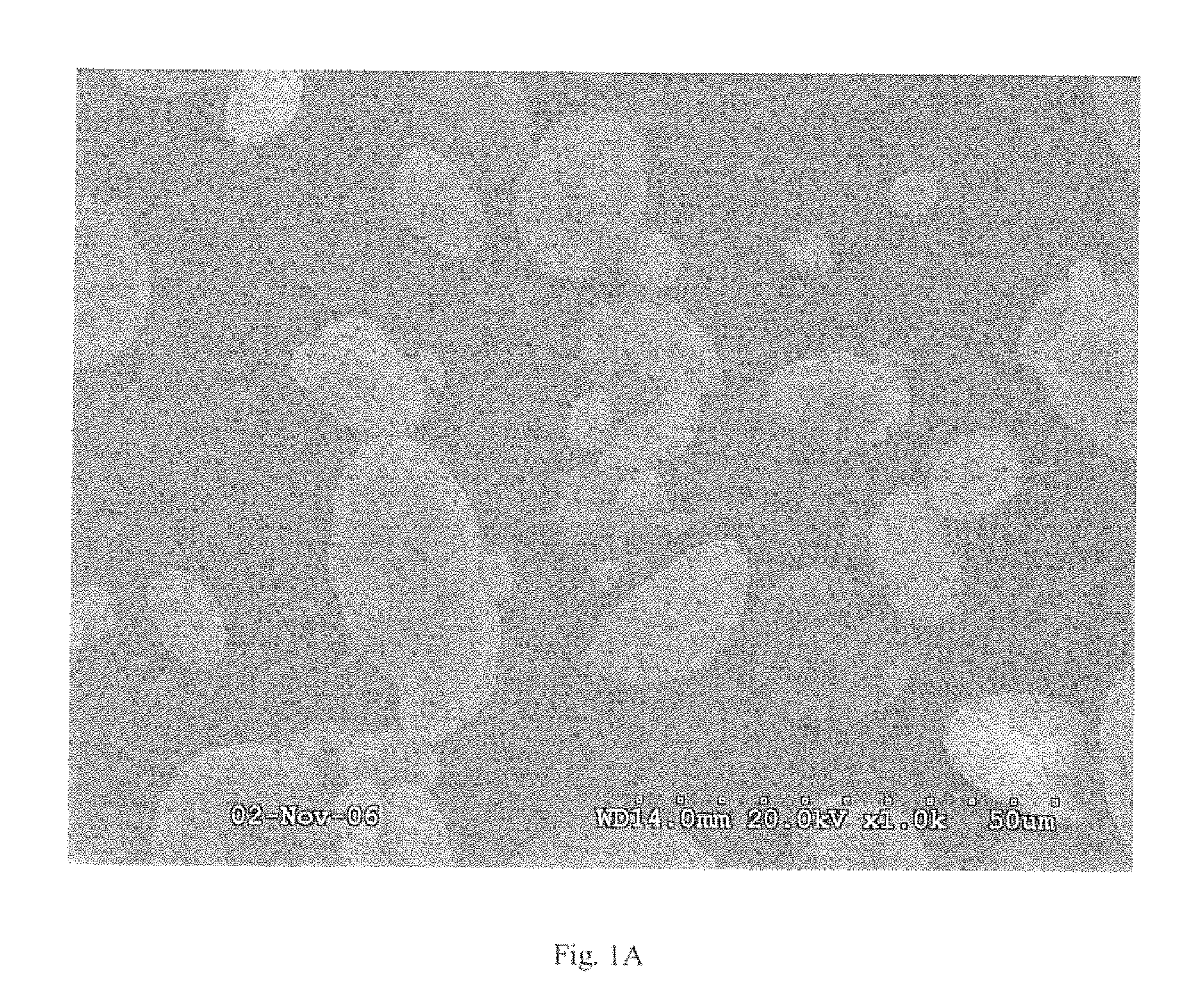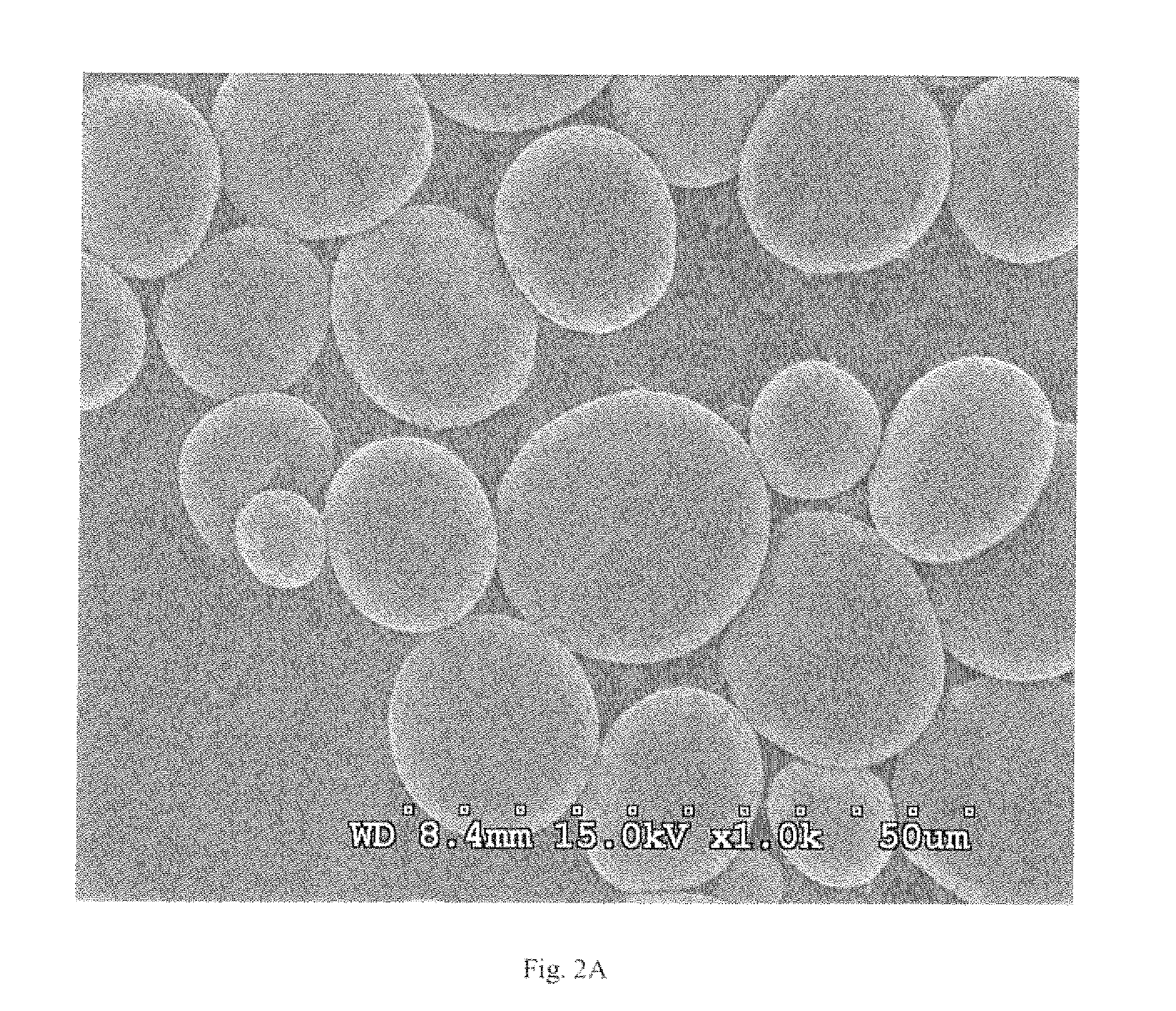Resistant starch-hydrocolloid blends and uses thereof
a technology of which is applied in the field of stable starch products, can solve the problems of not being able to address or suggest interaction products made from resistant starch and hydrocolloids, or any resulting nutritional or functional benefits, and achieves the effects of strengthening interaction, facilitating preparation, and enhancing nutritional values and dietary fiber contents
- Summary
- Abstract
- Description
- Claims
- Application Information
AI Technical Summary
Benefits of technology
Problems solved by technology
Method used
Image
Examples
example 1
Production of Cross-Linked Resistant Starch
[0052]Cross-linked resistant wheat starch was prepared according to the methods described in U.S. Pat. No. 5,855,946. Resistant potato starch and resistant tapioca starches were also prepared as described in the '946 patent by substitution of potato starch or tapioca starch for wheat starch. These products are available under the commercial names of Fibersym 70 and Fibersym 80-ST from MGP ingredients Inc and Actistar RT form Cargill Inc.
[0053]In more detail, wheat starch (50 g, dry basis), water (70 ml), sodium trimetaphosphate (5.94 g, 11.88%, based on starch [“bos”]), with STPP (0.06 g, 0.12%, bos) and sodium sulfate (5 g, 10%, bos) were placed in a round bottom flask, and the mixture was adjusted to pH 11.5 by adding 1.0M sodium hydroxide (.about.25 ml). The slurry was stirred continuously, warmed to 45° C., and held at 45° C. for 3 h. After that time, the pH of the slurry was found to decline by .about.0.2-0.3 pH units. The slurry was a...
example 2
Production of Cross-linked Resistant Starch and Non-Cross-linked Resistant Starch / hydrocolloid Interacted Products
[0054]Cross-linked resistant starches as described in Example 1 were interacted with hydrocolloids as follows. Food grade hydrocolloid (10.0 g) was slowly added to a 1 L beaker with 600 ml of water and mixed for 30 min. Cross-linked resistant starch (200 g) was next added to the beaker and mixed for an additional 30 min. The product is then dried in a conventional forced air oven at 45° C. to a moisture content of about 10%.
[0055]Comparative non-cross-linked resistant starches were used in lieu of the cross-linked resistant starches to prepare comparable interacted products. However, with these non-cross-linked starches (for example retrograded RS3 starch), greater water absorption was observed and an additional 200-400 ml of water was added to the reaction mixture to facilitate mixing.
[0056]Alternately, appropriate interaction of resistant starches and hydrocolloid can ...
example 3a
Production of Resistant Starch / Hydrocolloid Interaction Products Using Oven Drying
[0063]One hundred parts of commercially available cross-linked resistant wheat starch (Fibersym 70, MGP Ingredients, Sic, Atchison, Kans.), 5 parts of hydrocolloid, and 250 parts of water were mixed for 30 min and heated for 30 min at 85° C. under continued mixing. The resultant products were oven dried as previously described, and were evaluated as follows, together with cross-linked resistant starch alone as a control.
TABLE 1TDF byAOAC-SV95-W / OHydrocolloid991.43SV95pptWaterStarch / oilCross-linked RS (control)68.1%2.83.06.410.6K-Carrageenan75.8%2.83.06.811.0K-Carrageenan / LBG (1:1)72.7%3.42.64.013.4Xanthan / LBG (1:1)58.1%20.04.0016.0High methoxyl pectin70.9%3.03.26.410.4Low methoxyl pectin71.3%3.43.46.210.4Carboxymethyl cellulose88.6%6.65.24.810.0Sodium alginate87.5%3.04.44.810.81-carrageenan79.3%3.03.06.810.2Tara gum72.1%4.45.03.212.0HPMC69.6%3.43.04.412.6
LBG=Locust bean gum, HPMC=hydroxyproplymethly ce...
PUM
 Login to View More
Login to View More Abstract
Description
Claims
Application Information
 Login to View More
Login to View More - R&D
- Intellectual Property
- Life Sciences
- Materials
- Tech Scout
- Unparalleled Data Quality
- Higher Quality Content
- 60% Fewer Hallucinations
Browse by: Latest US Patents, China's latest patents, Technical Efficacy Thesaurus, Application Domain, Technology Topic, Popular Technical Reports.
© 2025 PatSnap. All rights reserved.Legal|Privacy policy|Modern Slavery Act Transparency Statement|Sitemap|About US| Contact US: help@patsnap.com



